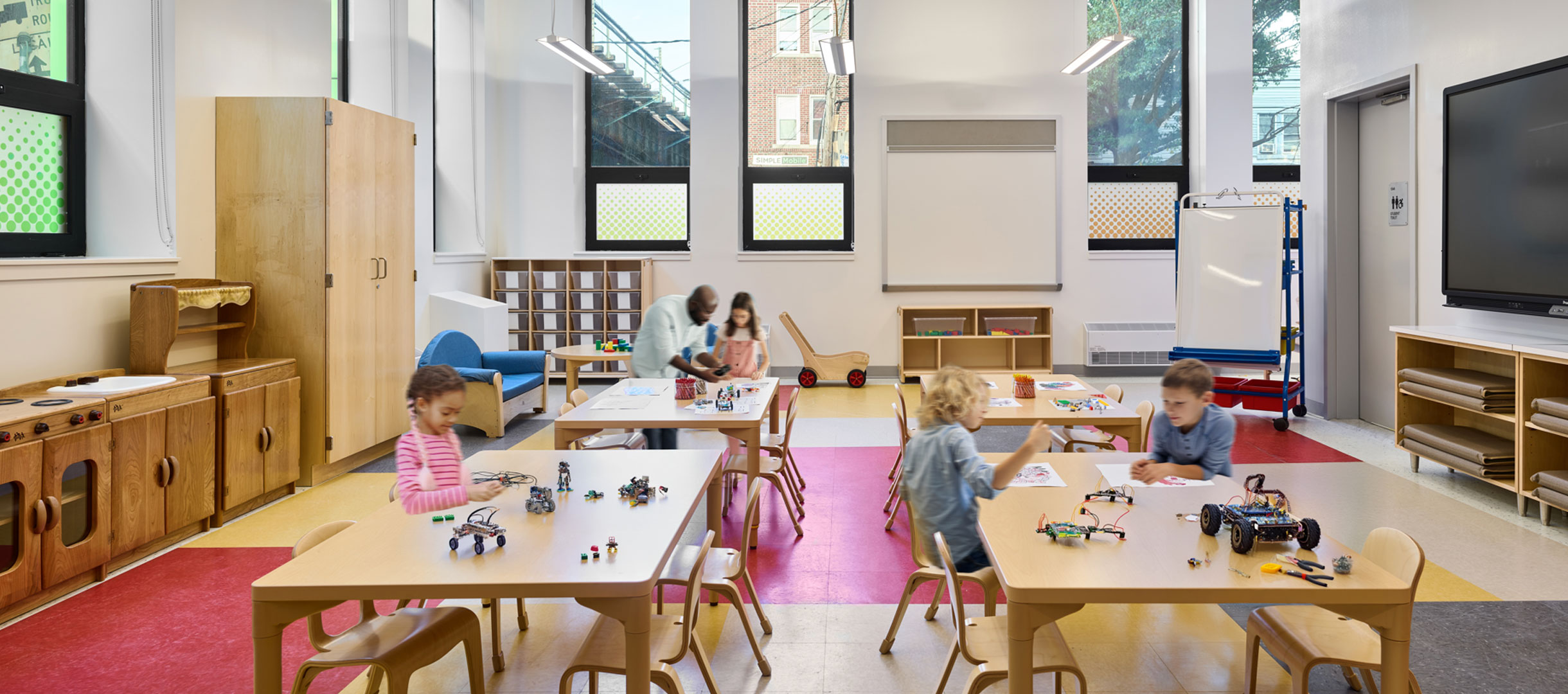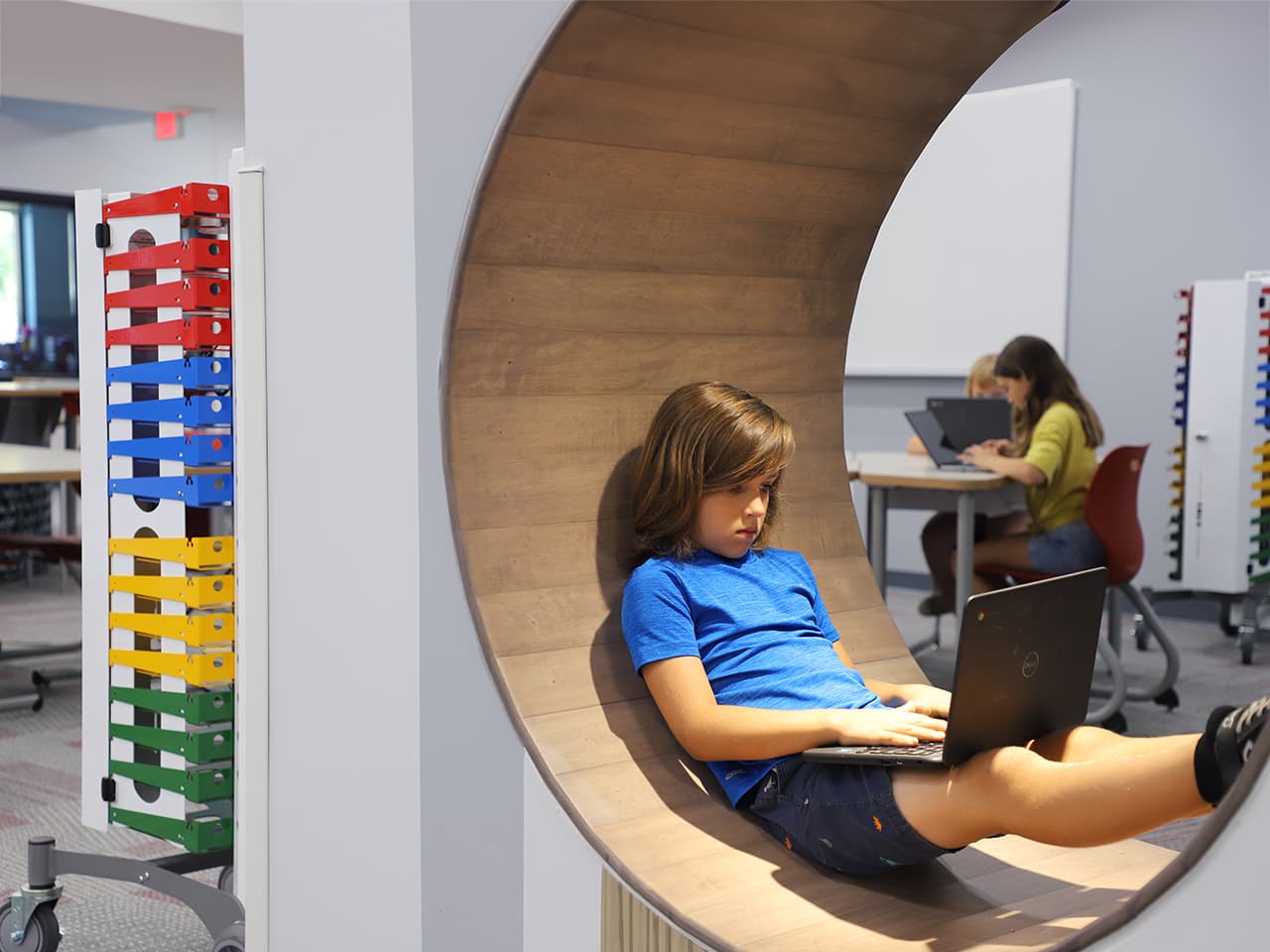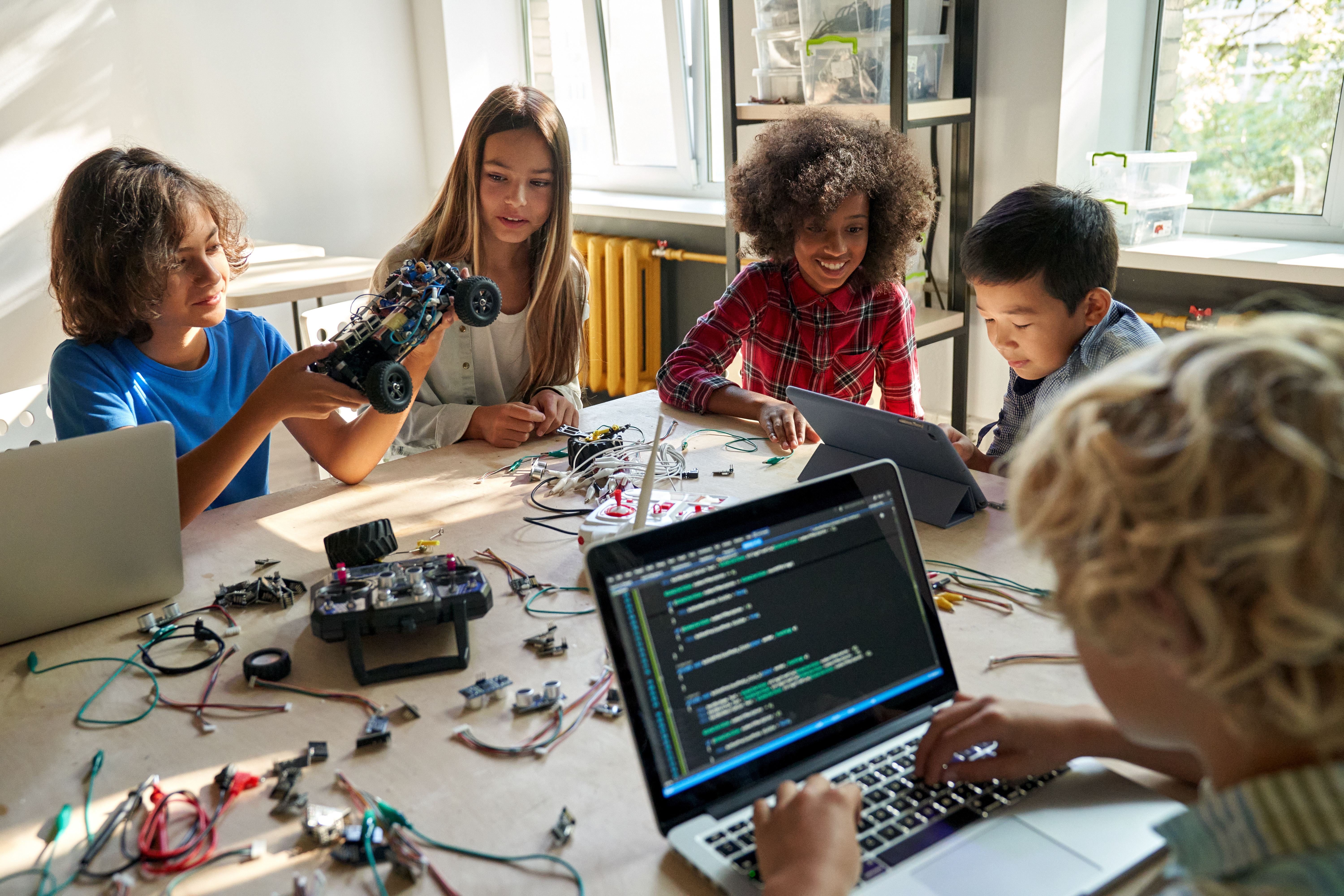Rethinking Educational Design in the Age of AI
2025.10.07

Artificial intelligence is moving rapidly into classrooms. From tutoring bots and adaptive learning software to generative tools that help students brainstorm ideas or draft essays, AI is reshaping how learning happens. Much of the conversation has focused on curriculum and pedagogy—but just as important is where this learning takes place. As AI transforms the roles of teachers and students, it also demands a reimagining of the spaces that support them.
How AI is Changing Teaching and Learning
AI enables students to learn in more personalized ways. Adaptive platforms adjust pacing, sequence, and difficulty, meaning students in the same class may be working at entirely different levels. This reduces the emphasis on one-size-fits-all lectures and instead calls for a mix of quiet zones for focused work, small-group collaboration areas, and digital stations for AI-assisted activities.
Classrooms are also becoming more hybrid. With content delivered online, asynchronously, or in blended formats, teachers spend less time standing at the front of the room and more time facilitating activities, providing real-time feedback, and guiding inquiry. Collaborative tools and AI-supported feedback loops further shift the classroom toward active, participatory learning.
Collaborative tools and AI-supported feedback loops further shift the classroom toward active, participatory learning
Design Implications for Future Schools
These shifts point toward new priorities in educational design, but our recent conversations show that not all schools are yet considering how spatial decisions shape emerging AI informed curricula. Flexibility remains essential: movable walls, modular furniture, and multi use layouts allow rooms to shift between group work, guided instruction, and independent inquiry. Robust infrastructure is equally critical, including reliable connectivity, abundant power access, and attentive design of acoustics, lighting, and surfaces for both digital and analog engagement.
Technology rich learning calls not only for devices but for environments that support exploration. Virtual reality zones, projection surfaces, and interactive boards can sit alongside studios for craft, making, and hands-on experimentation, reinforcing that new learning models require varied spatial cues.
Shared spaces will need to evolve as well. Instead of relying solely on fixed classrooms, schools may benefit from flexible learning studios, breakout hubs, and common areas that can transition between collaboration, presentation, and quiet reflection. Without recognizing how space underpins pedagogy, even the most forward thinking curricular shifts risk being constrained by outdated rooms.

Case Studies and Early Experiments
Some schools are already experimenting with AI-enabled models. Alpha School, a private network expanding in several U.S. cities, uses adaptive learning apps for core academics, with guides replacing traditional teachers. Seckinger High School in Georgia has created a dedicated AI-themed curriculum cluster, while New York City’s Teach to One program uses technology and adaptive scheduling to reconfigure instruction across multiple learning stations in a single classroom.
Globally, momentum is building as well. China has introduced mandatory AI instruction in certain schools, while Estonia has committed to systematically integrating AI into education planning on a three-year cycle. These examples suggest that spatial design will soon need to catch up with rapid curricular innovation.

Spatial design will soon need to catch up with rapid curricular innovation
Looking Ahead
AI is not just another tool inside classrooms—it is a catalyst for rethinking what classrooms are. The challenge and opportunity for architects, school planners, and policymakers is to create future-ready, learner-centered environments that are flexible, inclusive, and equitable.
What might classrooms look like 10 or 20 years from now if these changes take hold? We may see fewer rows of desks and more dynamic studios that blend digital and physical worlds, designed to support both human connection and technological possibility. The next wave of educational design is already beginning, and AI is at its core.
The next wave of educational design is already beginning, and AI is at its core


